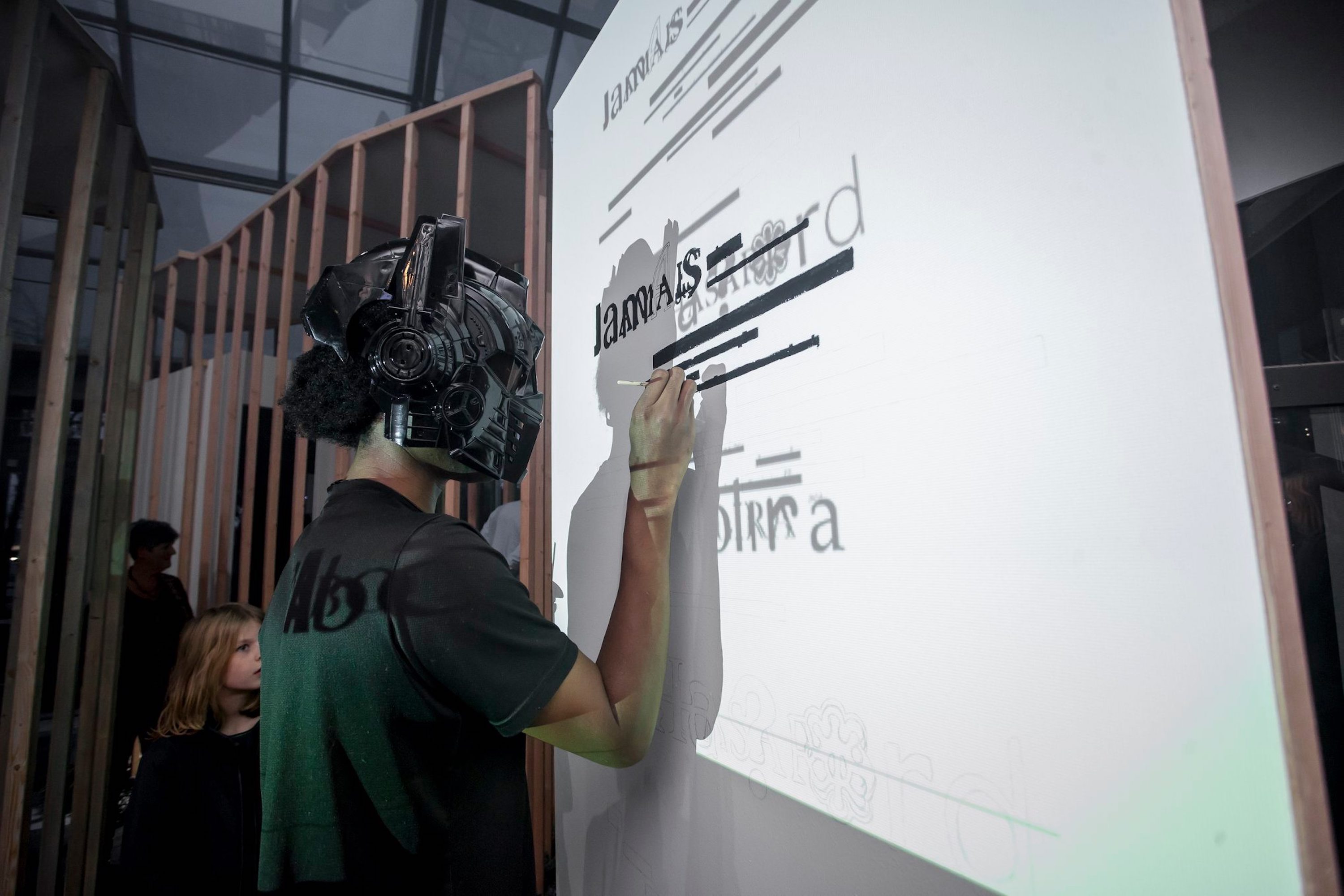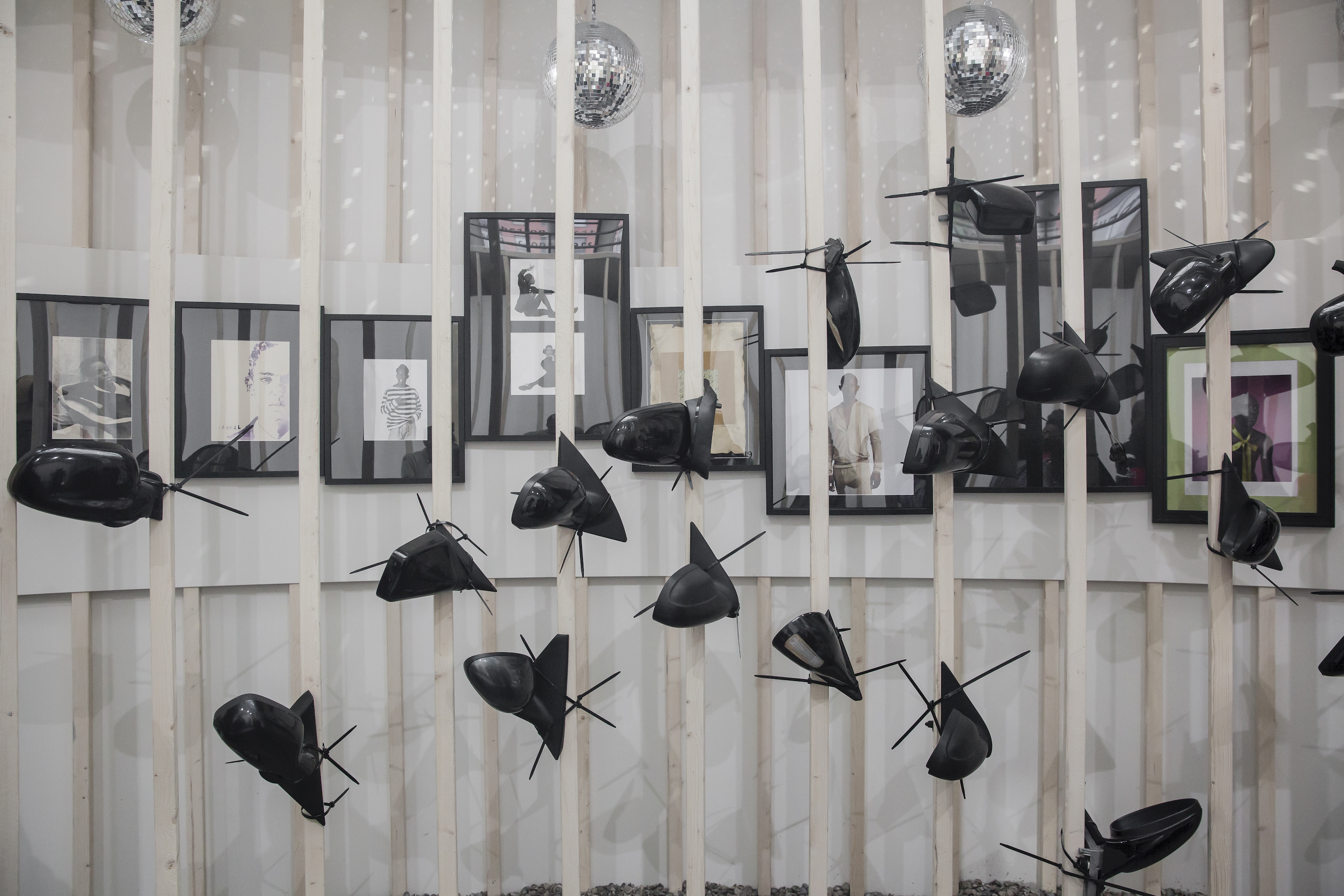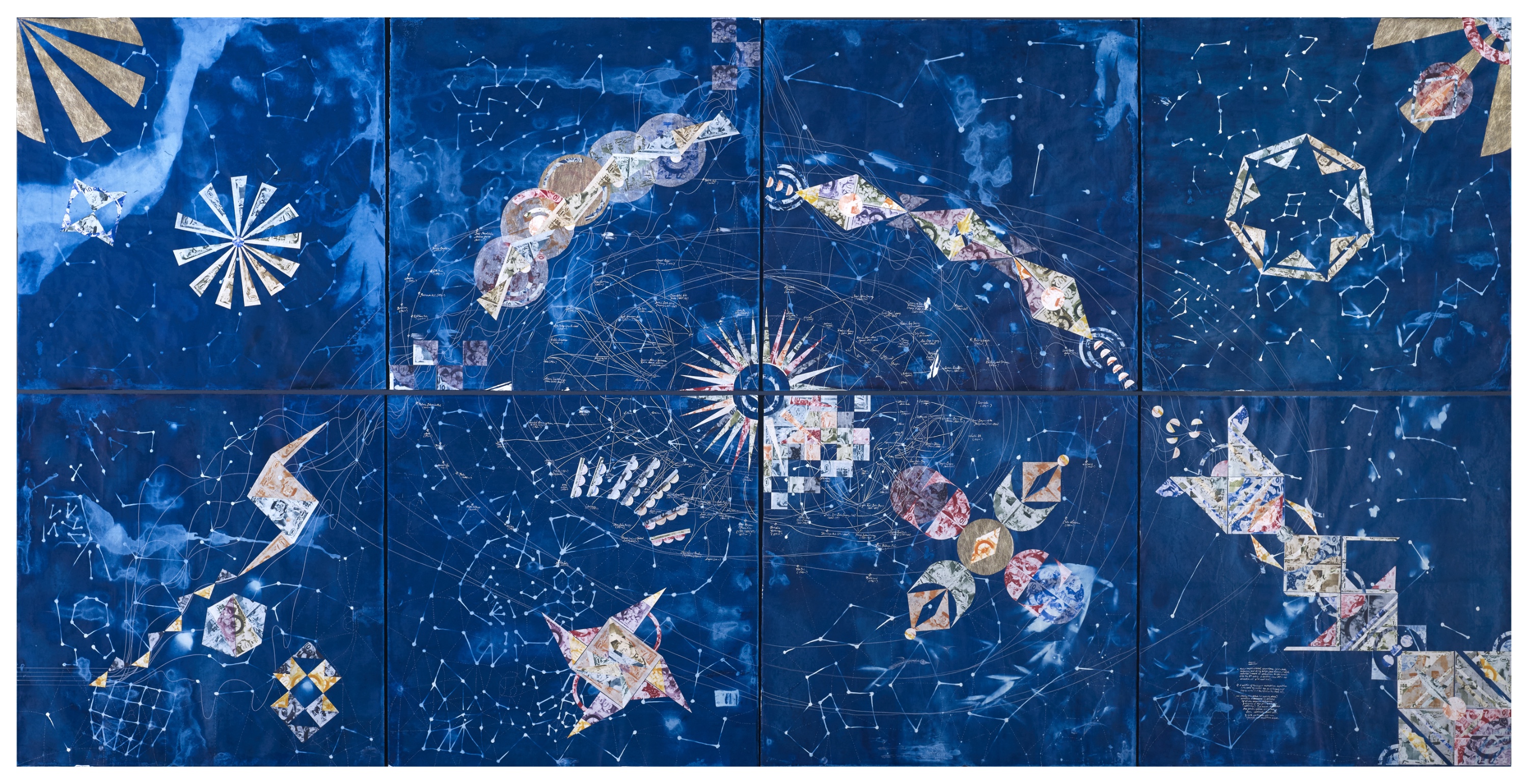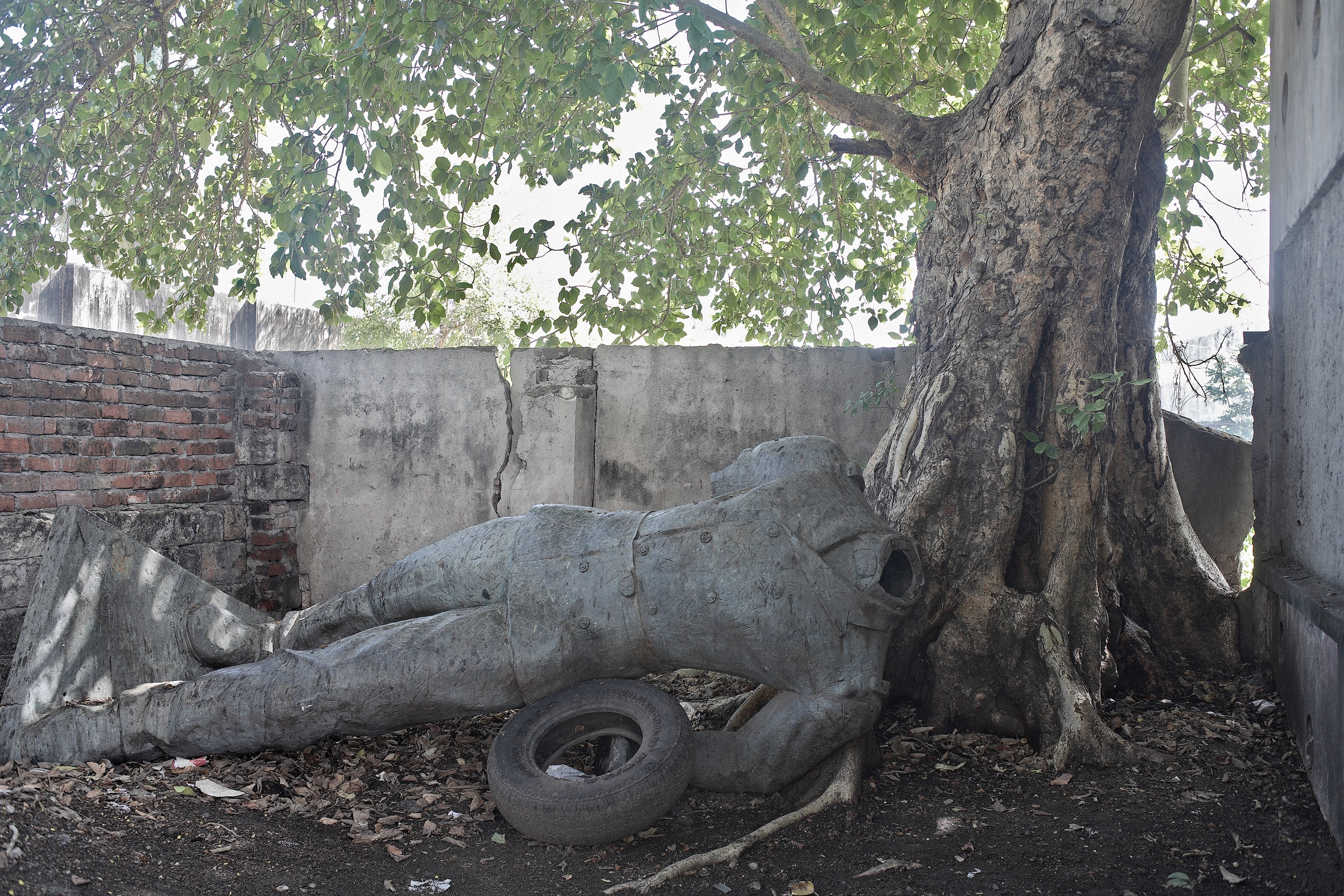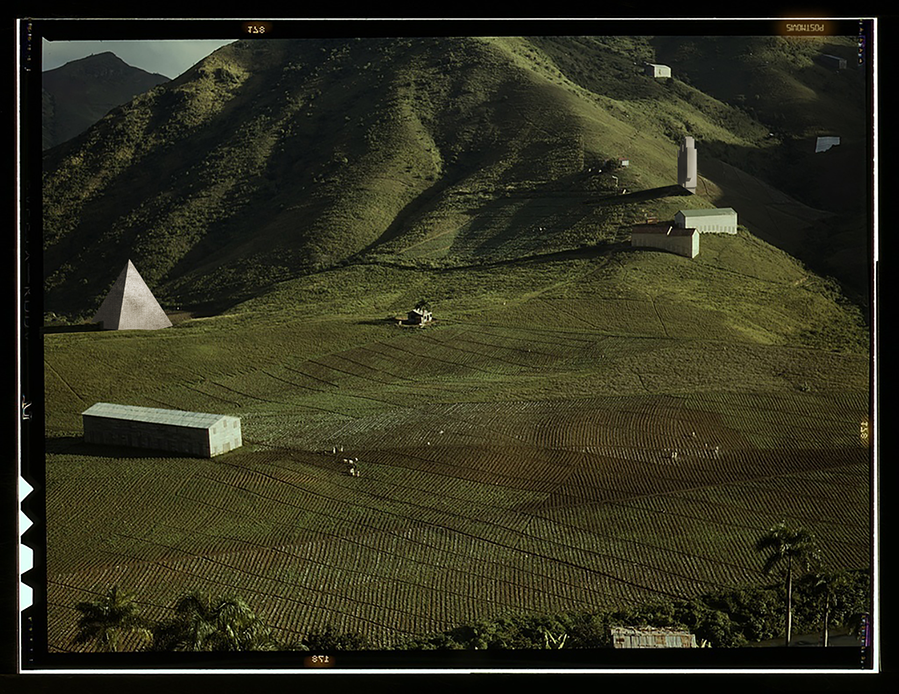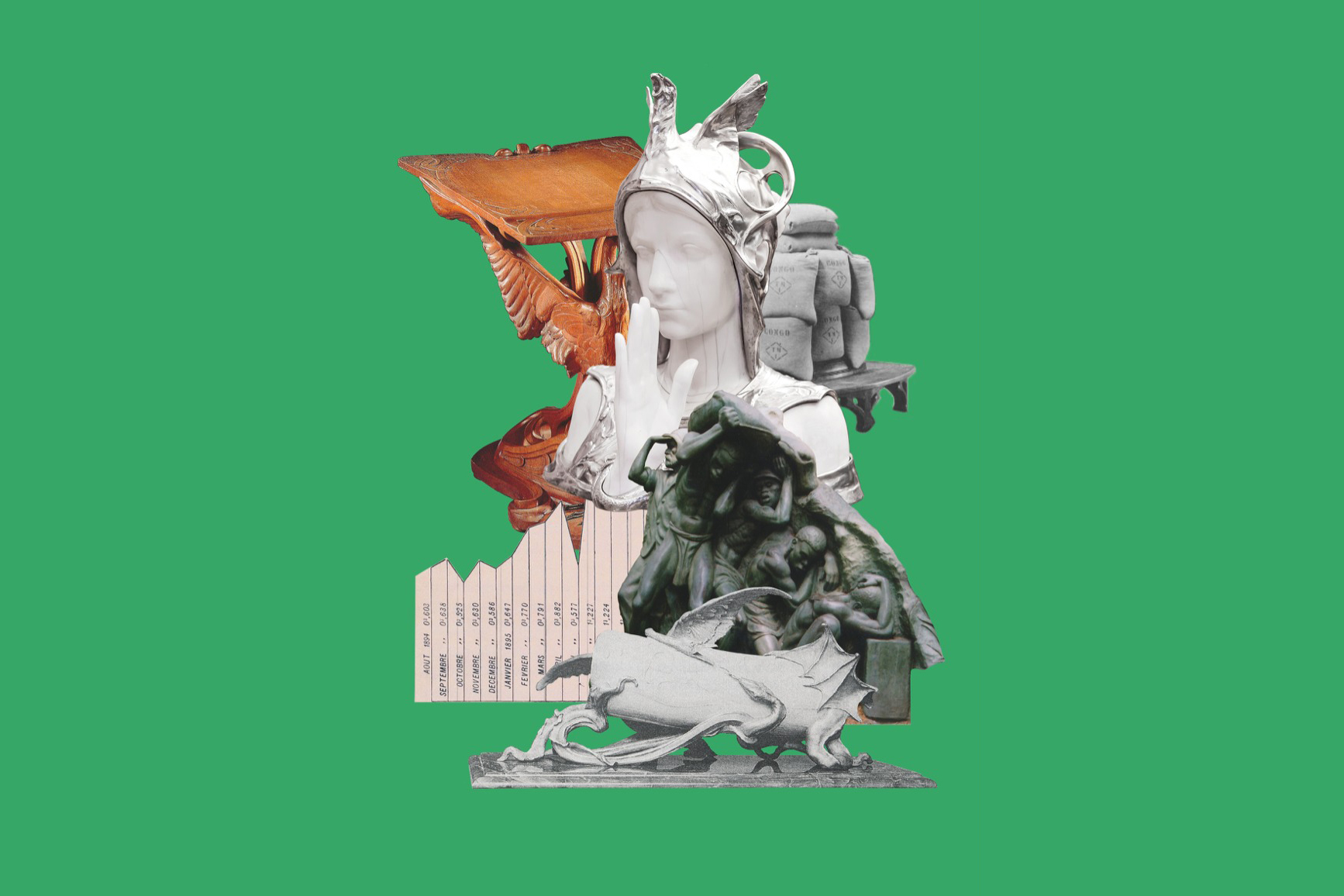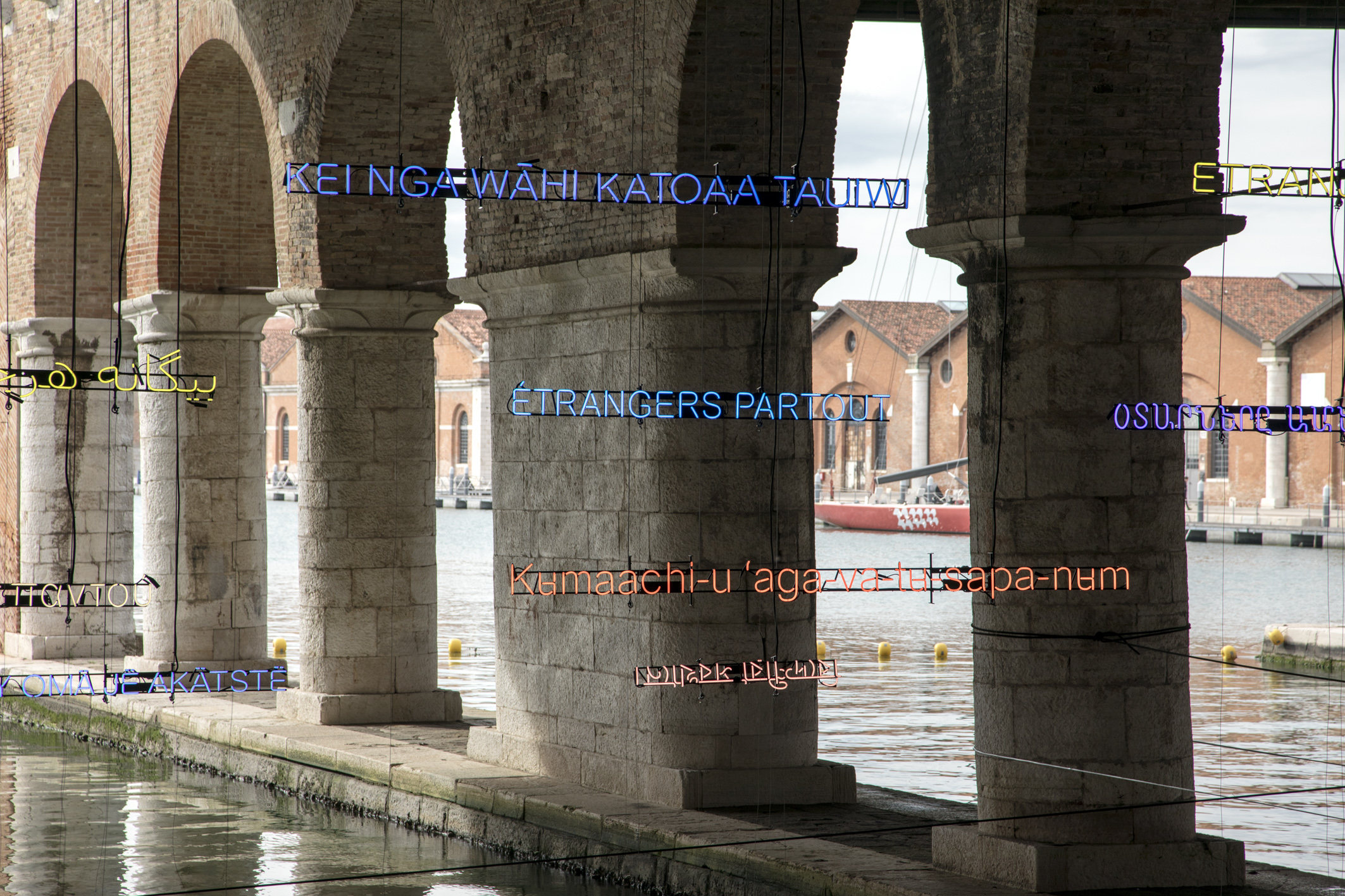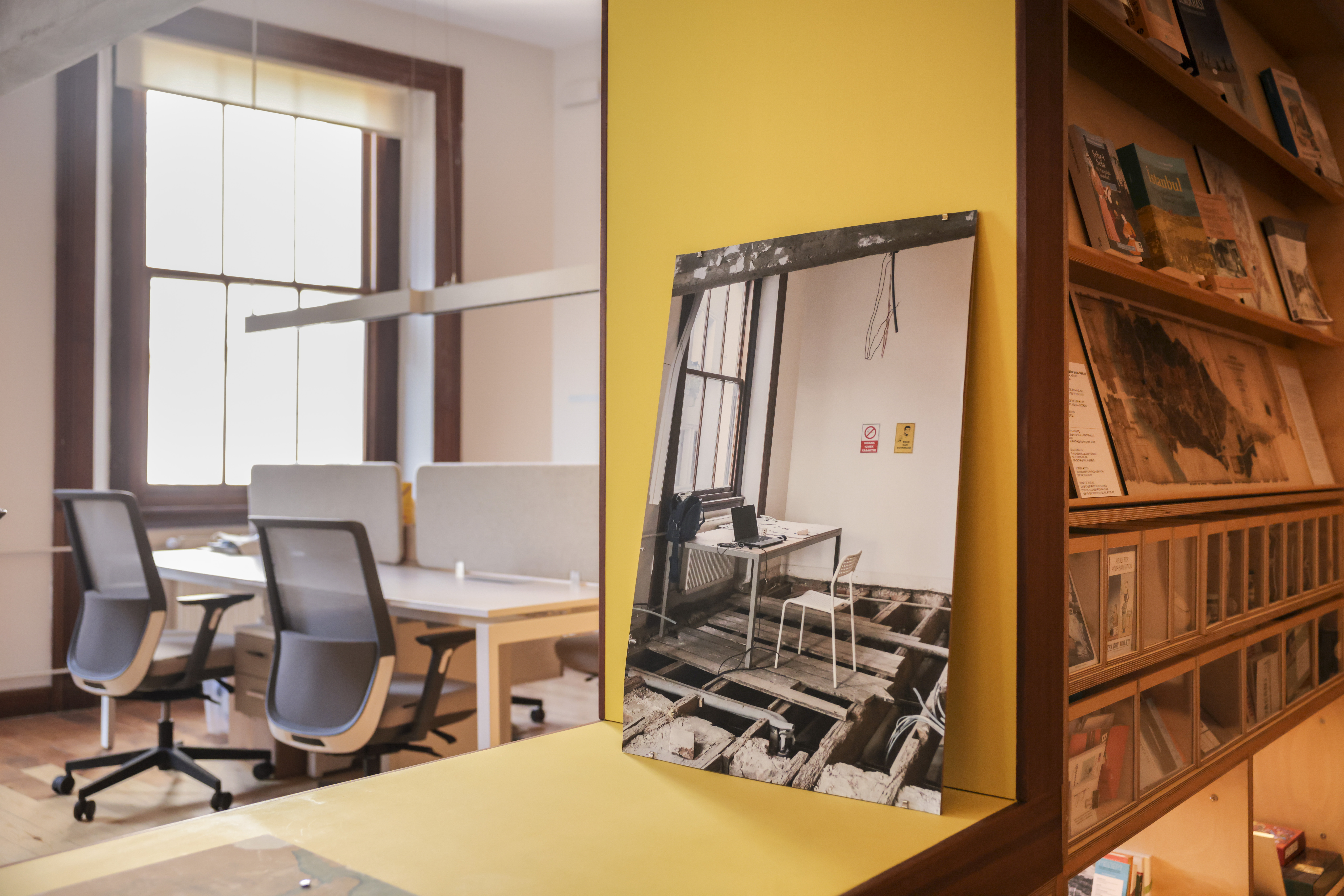October 25–December 13, 2019
The crunch of seashells breaking underfoot heightens my awareness as I navigate a labyrinth of narrow passages connecting a series of 12 elegant pavilions of varying size. These tall structures, constructed from slim wooden beams, create transparency at one moment and evoke entrapment the next. Sometimes the shells form paths; other times, entry is provided by solid, sleek black walkways. Templates have been used to spray-paint names on a pillar of each pavilion: Athina. Paramaribo. Bruxelles. Milano. Qahira. Rotterdam. Displayed inside them are videos, sculptures, photographs, and drawings.
This is Movt. Nr. 10: Ososma (2019) by Charl Landvreugd. Installed in an empty office building under the premises of CBK Zuidoost, it is both an installation and an exhibition environment featuring an overview of artworks and the periods in which they were created—Landvreugd calls them “movements”—that cross his diverse work as an artist, curator, academic researcher, and leading nightclub organizer in Rotterdam in the 1990s. In the Sranan Tongo language (also known as Surinamese) ososma describes the home that is not one’s own house; a space of relational intimacy and belonging that goes beyond individual property. It suggests how the personal and the common connect in Landvreugd’s work. Each pavilion is named after a city the artist has lived in. These cities are his and others’ homes, just as the intersecting historical trajectories that culminate in his work—from the transatlantic slave trade to anticolonial struggle, from the Afro-Surinamese heritage of the Winti religion to radical futurology, and from clubbing aesthetics to queer intimacies—are his and many others’ herstory.
This home of many—this ososma—is protected by a returning figure that appears in various prints, videos, and sculptures displayed in the pavilions. It manifests most often in the form of a tall black man, bare chested, with a green and yellow Pangi cloth wrapped around his waist, his head covered by a black-painted mask of Optimus Prime, the leader of the Autobots in the “Transformers” TV and movie series. These are the “Atlantic Transformerz” that inhabit various of Landvreugd’s movements. In Movt. Nr. 10: Ososma, they appear in honorary portraits, standing on bustling crossroads or overseeing the Atlantic Ocean. Their embodied hybridity—shaped between places of origin and arrival, situated pasts and techno-futurities, mourning and victory—is Landvreugd’s norm.
Hybridity governs everything in this exhibition. In the London pavilion, rearview mirrors clutter wooden pillars like machinic insects, reflecting photographic and painted portraits of the artist hung on the walls. A toy gun and a rock in the Amsterdam pavilion have mutated into a spaceship in search of Anana Keduaman Keduampon, the creator figure central to Winti. The black obelisk in Athina, meanwhile, is an ode to the Surinamese novelist Edgar Eduard Cairo, who invented a language he called “Cairo-an,” a hybrid of Sranan Tongo and Dutch. In the Bruxelles pavilion, the “Atlantic Transformerz” reappear in the form of a woman’s body. Lifesize, ink-black, and standing on a floor of salt and soap, she appears to rise as an alternate Lady Justice—not in the service of a state, but rather as a liberated guardian of this ososma.
After spending an indefinite time in this labyrinth, where pasts, presents, and futures are assembled in the form of ancestors and descendants, I find myself on a pathway that leads to a staircase. After climbing two stories, the staircase suddenly allows for a radically altered view of what had seemed to be modernist pavilions, reminiscent of world fairs and the Giardini at the Venice Biennale, from where, through the arrangement of paths and pavilions, the pattern of a Tembe emerges. Tembe is an umbrella term that describes the traditional artform of the Maroon people—also known as Fiimen or “free people,” referencing their struggle for liberation from Dutch colonizers starting in the mid-seventeenth century—that is characterized by complex geometrical patterns. These manifest in carved sculptural wooden objects, architectural designs, painted textiles, and utilitarian objects. In this ososma, the Tembe organizes modernist heritage, not the other way around.
Long overdue discussions on institutional inclusivity and diversity have opened up a crucial question: Inclusive and diverse in relation to whose norm? Landvreugd’s futuristic Tembe refuses to add to defunct and oppressive historical canons that appropriate what they consider “otherness.” His canon is a hybrid home of many. Across the pavilions, countless shiny black masks lie waiting to be used: Landvreugd won’t be joining your army, but you’re welcome to enlist in his.







